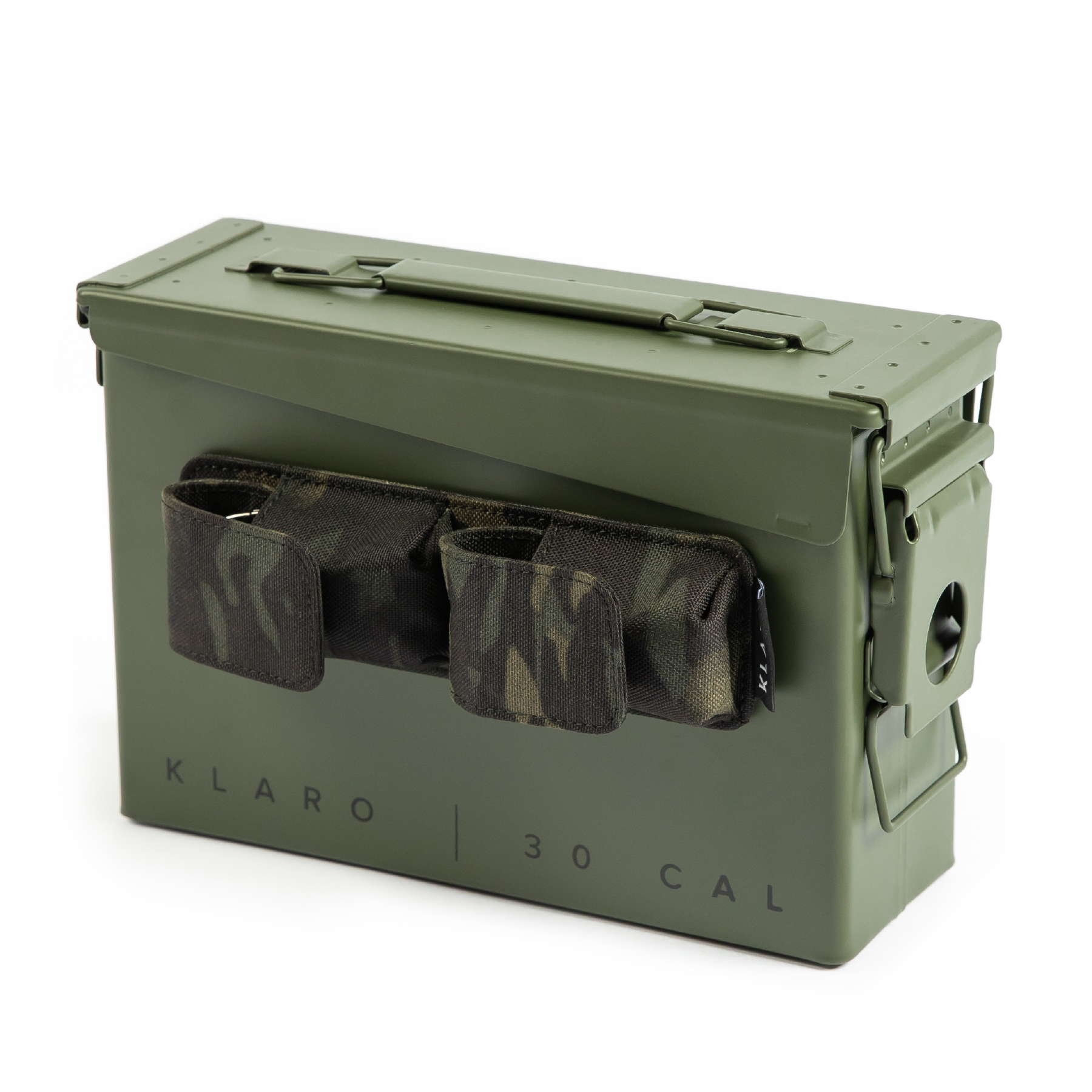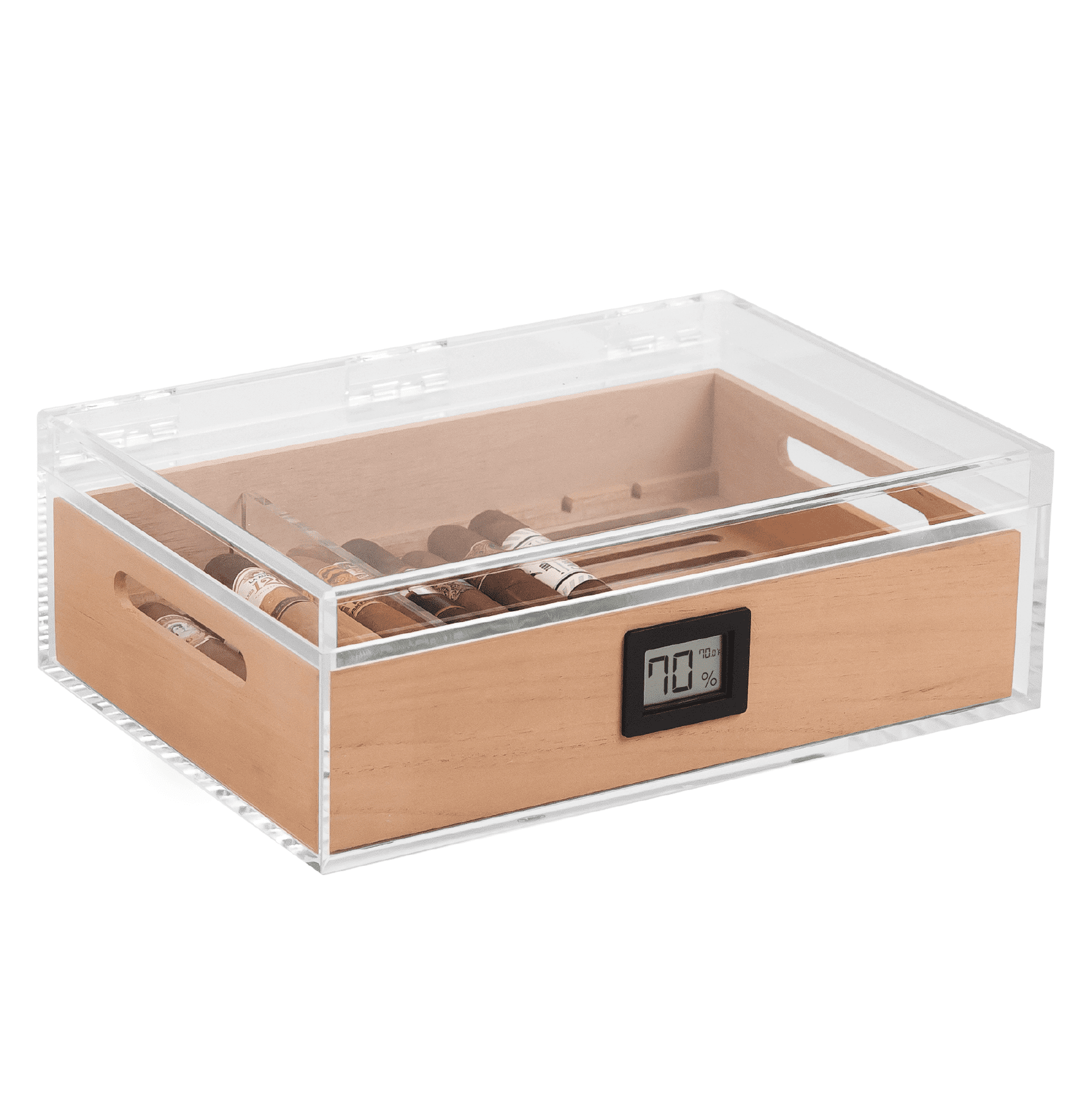Traditionally, humidors have relied on manual humidification methods, but with the advent of technology, electric humidors have become increasingly popular, maximizing efficiency and automation. But how do electric humidors compare to traditional setups, specifically regarding maintenance? Let’s explore the maintenance requirements of electric humidors and how to support their humidification systems.
How do you maintain an electric humidor?
Maintaining an electric humidor is relatively straightforward. These modern humidors often come with built-in electronic controls that allow you to monitor and adjust humidity levels more accurately than traditional humidors. To keep your electric humidor in top condition, follow these steps:
- Regularly check the water reservoir: Some electric humidors incorporate a water reservoir for additional moisture. This reservoir helps maintain humidity levels within the humidor. It is essential to monitor and refill the reservoir as needed, especially in dry environments. Check the manufacturer's instructions to determine if your particular electric humidor requires water and follow their guidelines for optimal performance.
- Clean the humidor regularly: Just like any storage container, it is crucial to clean your electric humidor periodically. Remove any debris or cigar remnants, wipe down the interior with a clean cloth, and ensure there is no mold or excessive moisture buildup. Cleaning your humidor not only helps maintain the desired humidity level but also ensures the longevity of your cigars by keeping them in a clean and hygienic environment.
Do I need to put water in my humidor?

One of the advantages of electric humidors that make them worth while is that they provide a more controlled and stable humidity environment, reducing the need for frequent water replenishment. However, not all electric humidors require water. Many models utilize alternative humidification methods, such as electronic misting systems or gel-based humidifiers.
When purchasing an electric humidor, carefully review the product specifications and instructions provided by the manufacturer. This information will guide you on whether or not water is required for your particular model. Some electric humidors may have a water reservoir or a compartment for water-based humidifiers. In such cases, you may need to put water in your humidor. Always follow the manufacturer's guidelines to ensure optimal performance and longevity of your electric humidor.
How do I keep my electric humidor at 70% humidity?
Maintaining the desired humidity level is crucial to preserve the quality of your cigars. Here are some tips to help you keep your electric humidor at a consistent 70% humidity:
- Proper sealing: Ensure that the humidor's lid seals tightly, preventing moisture from escaping or entering the unit. A proper seal helps maintain a stable humidity level. Inspect the seal regularly and replace it if it becomes worn or damaged.
- Monitor humidity levels: Most electric humidors come with a built-in hygrometer to measure the humidity inside the unit. Regularly check the humidity levels indicated by the hygrometer. If the humidity drops below 70%, adjust the settings accordingly. Depending on your electric humidor model, this may involve increasing the humidity output or activating the built-in humidification system.
- Use additional humidification devices if needed: In some cases, especially in large or dry environments, the built-in humidification system of your electric humidor may not be sufficient to maintain the desired 70% humidity level. In such situations, you can supplement the humidification by using additional devices like gel-based humidifiers or electronic misting systems. These devices provide extra moisture and help to achieve the desired humidity level.
What is the difference between electric and traditional humidor?

Electric humidors offer several advantages over traditional humidors. Some key differences include:
- Humidity control: Electric humidors provide precise humidity control through electronic sensors and adjustable settings. Traditional humidors rely on manual methods, such as using distilled water and hygrometers, which may require more frequent monitoring and adjustment. Electric humidors allow for more accurate and consistent humidity levels, reducing the risk of over or under humidification.
- Portability: Electric travel humidors are compact and convenient for those who want to carry their cigars while maintaining optimal conditions. Traditional humidors tend to be larger and less suitable for travel. Electric travel humidors are designed with portability in mind, often featuring compact designs, durable construction, and efficient power usage for extended periods of use without access to electricity.
- Maintenance: Electric humidors generally require less maintenance compared to traditional humidors. The automated features and advanced technology of electric models contribute to easier upkeep and better humidity regulation. With traditional humidors, the manual monitoring of humidity levels, frequent water refills, and occasional calibration of hygrometers can be time-consuming. Electric humidors streamline the maintenance process and offer more convenience.
Parting Puffs
Electric humidors provide a modern solution to cigar storage and maintenance. Regular cleaning, proper sealing, and careful monitoring of humidity levels are crucial for keeping your electric humidor in optimal condition. Understanding the differences between electric and traditional humidors helps you make informed decisions based on your preferences and needs. Whether you choose an electric or traditional humidor, the goal remains the same: preserving the quality and flavor of your cigars.
Want to learn even more about humidors? Be sure to check out our comprehensive guide to humidors where we answer questions about which humidor might be right for you, how to maintain it, and how to get the best performance from your home humidor.















